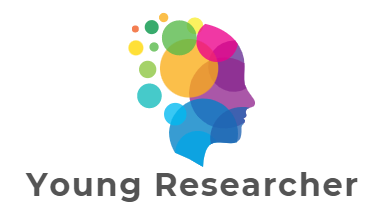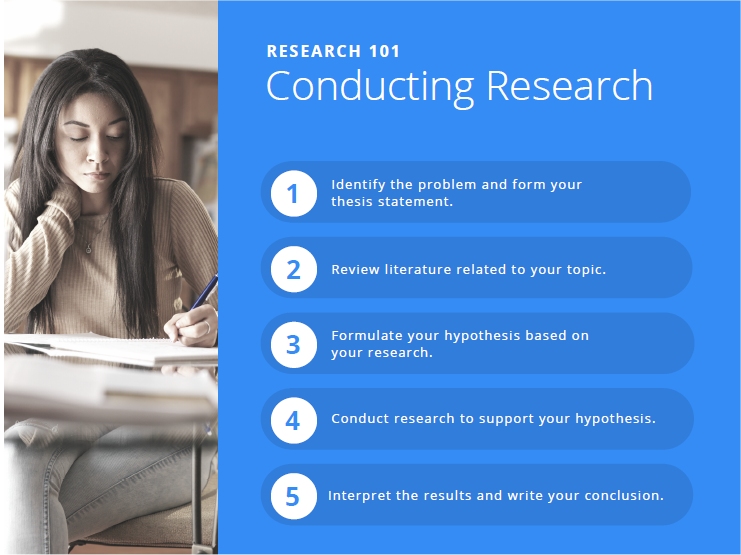Problem Identification:
Selecting a research problem is the initial step in the research process. A research problem is a statement or query that identifies an area of worry, perplexity, or
- Choose a broad subject: Choose a topic that interests you and has some bearing on your field of study or industry.
- Do a literature review: Perform a comprehensive literature review to determine what has already been studied in the topic, what knowledge gaps exist, and what unsolved issues remain. This will assist you in identifying potential research questions and issues.
- Talk with specialists: Consult with specialists in the field or colleagues with research experience. They may be able to shed light on existing issues and knowledge gaps.
- Use brainstorming approaches to produce a list of prospective challenges or research topics. They can be refined and condensed later on in the procedure.
- Restrict the problem: Consider factors such as feasibility, significance, and relevance to the discipline while refining and narrowing the list of potential research questions or challenges. The research problem must be tractable, significant enough to warrant investigation, and pertinent to the discipline.
- Once a research problem has been discovered, formulate a concise research question or explanation of the problem. This statement should be succinct, particular, and centered on the research problem.You can use this questionnaire to arrive to a research problem:
- You can use our K-W-L worksheet shown along literature survey section, to start off.

Literature Survey
A literature review is a complete and critical investigation of existing research papers and publications on a particular topic or research question. It entails methodically assessing and evaluating the current knowledge and discoveries in a certain area of study, identifying gaps, and recommending future research initiatives. The following are the stages to conduct a literature review:
- Defining the study issue or area of interest is the initial stage. This will help steer the literature search and find relevant publications. The method was given in the section above.
- Perform a thorough literature search utilizing academic databases such as PubMed, Google Scholar, and Web of Science. Use a combination of keywords, Boolean operators (AND, OR, NOT), and other search techniques to narrow search results.
- Assess sources: Analyze the information sources according to their relevancy, credibility, and quality. Examine the author’s credentials, the date of publication, and the peer-review procedure.
- Classify the information: Arrange the data in accordance with the study question and subtopics. Use a system of note-taking to document pertinent information, including major results, research methodologies, and constraints.
- Analyze the data: Evaluate the data acquired from the literature study in order to find patterns, themes, and trends in the existing research. Provide a summary of the findings and make conclusions from the analysis.
- Summarize the literature review: In a clear and succinct manner, summarise the literature review, including the research question, the significant findings, and the gaps in the existing understanding. Use tables, graphs, and other visual aids to properly explain the information.
- Give recommendations: Make recommendations for future study based on the literature review’s identified gaps. Propose future research directions and analyse the significance of the results for practise or policy.

Formulating a Hypothesis

A hypothesis is a statement that suggests a potential explanation for certain phenomena or the relationship between variables in a research project. It is an educated guess or forecast of what the researcher anticipates discovering in the investigation.
Not all scientific investigations require a hypothesis. Many types of research, such as exploratory or descriptive studies, may not contain a hypothesis. Although the objective of exploratory research is to produce new ideas or hypotheses, a hypothesis may not be required at the outset of the investigation. The objective of a descriptive study is to describe and examine a particular occurrence; hence, a hypothesis may not be applicable.
Yet, numerous research studies do contain a hypothesis. A hypothesis provides a framework for verifying the validity of the proposed relationship between variables and serves as a guide for the research investigation. In experimental research, where the researcher manipulates one variable and examines its effect on another, hypotheses are frequently employed.
The following are the steps for developing a hypothesis:
- Clearly identify the research issue as discussed above.
- Examine the current literature as discussed above.
- Name the variables: In the research project, identify the independent variable (the variable that is changed) and the dependent variable (the variable that is assessed or observed).
- Create a hypothesis that offers a plausible relationship between the independent and dependent variables based on the study question, available literature, and variables. The theory must be testable, specific, and transparent.
- Explore alternate hypotheses that may explain the link between the independent and dependent variables. This will ensure that the hypothesis is the most plausible explanation for the studied occurrence.
- Refine the theory based on comments from other researchers, preliminary evidence, or additional examination of the existing literature.
- Include the independent and dependent variables, the projected relationship between them, and any special conditions or assumptions in a clear and simple hypothesis.
Data Collection

There are numerous ways to collect data for research, and the method used will depend on the research question, the nature of the phenomenon being examined, the sample size, and other variables. Following are some of the most prevalent data collection techniques:
- Surveys entail asking a large number of participants a series of questions. Quantitative and qualitative data can be collected by in-person, telephone, postal mail, or internet surveys.
- Interviews: Interviews include asking a limited number of people open-ended questions to elicit detailed information about their experiences or perspectives. Interviews can capture qualitative data and can be conducted in-person, through phone, or online.
- Observations consist of observing and documenting behaviour or events as they occur. Observations may be structured or unstructured and may gather qualitative or quantitative data.
- Experiments entail altering factors to determine their impact on a result. Experiments can be conducted in a laboratory or in the outdoors, and quantifiable data can be collected.
- Examining a specific case or example in depth to obtain insight into a bigger phenomenon is the objective of case studies. Case studies can acquire qualitative data through interviews, observations, and document analysis.
- Focus groups are comprised of a small group of individuals that discuss a certain topic or issue. Focus groups can collect qualitative data and can be either in-person or online.
- Analyzing previously acquired data for a different purpose constitutes secondary data analysis. Government statistics, academic databases, and business records are examples of secondary data sources.
Each method of data collecting has advantages and disadvantages, and researchers must carefully assess which approach or combination of methods would best meet their research topic and data requirements.
Experimentation and Analysis
Planning an experiment entails determining how to test a hypothesis in a reliable, valid, and ethical manner. The following stages are required to construct an experiment to test a hypothesis:
- Clearly specify the independent variable (the variable being controlled) and the dependent variable (the variable being measured or observed) in the experiment.
- Choose the candidates: Consider parameters such as age, gender, ethnicity, and any other pertinent qualities while selecting the volunteers for the experiment.
- Randomization and assignment: Randomly assign individuals to experimental groups to reduce bias and ensure that the groups are comparable at the beginning of the study. Use the right procedures to guarantee the randomization process is genuine and fair.
- Construct adequate control conditions for the experiment to guarantee that any observed effects are attributable to the independent variable and not to other variables. Control conditions can consist of placebo, no-treatment, or comparison groups.
- Decide the sample size: Establish the proper sample size for the experiment, taking into consideration criteria such as the magnitude of the effect, the variability, and the statistical power.
- Select the method: Select a procedure for the experiment that is consistent with the research question and being tested hypothesis. Verify the procedure is ethical and does not cause any harm to the participants.
- Perform the experiment: Conduct the experiment in accordance with the strategy, ensuring that all relevant stages are followed and that data is collected consistently and methodically.
- Evaluate the data: Using suitable statistical procedures, analyse the data to determine whether or not the hypothesis is supported. Use suitable tests to determine the statistical significance of the results.
- Conclude: Conclude based on the outcomes of the experiment, taking into account any limits or flaws in the design.
Now that the conclusion is reached we are ready to publish our work! Best of luck!!



